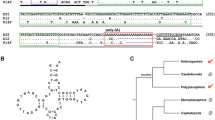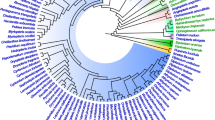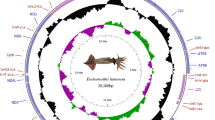Abstract.
Tempo and mode of nucleotide change were examined in an orthologous carnivoran nuclear repetitive DNA element (Can SINE), and compared with those of the transthyretin intron I (TR-i-I) sequence in which it is embedded, by using a phylogenetic framework. The Can SINE is found in representatives of all living caniform carnivoran families, but no living feliform families. This suggests insertion 40–65 MYA, after the two lineages split, but before the caniform radiation. Despite linkage and a long shared evolutionary history, both parsimony and likelihood analyses showed the Can SINE to be significantly different from TR-i-I in rates of evolution and phylogenetic hypotheses supported. The substitution rate is significantly higher in Can SINE than in TR-i-I, and this is attributable to the tRNA-related region of the insertion. While the incongruence length difference test revealed significant conflict between the Can SINE and TR-i-I partitions, the test was shown to be sensitive to the distribution of homoplasy within partitions. The conflicting phylogenies are likely the result of differences in phylogenetic accuracy (homoplasy distribution) rather than in phylogenetic history (gene trees). The base composition of Can SINE contains a significantly higher GC percentage than TR-i-I. Our results indicate that differences between the two partitions may be the result of homoplasy introduced by an increased substitution rate in the tRNA-related region of Can SINE owing to CpG hypermutability.
Similar content being viewed by others
Author information
Authors and Affiliations
Additional information
Received: 21 April 2000 / Accepted: 24 August 2000
Rights and permissions
About this article
Cite this article
Zehr, S., Nedbal, M. & Flynn, J. Tempo and mode of evolution in an orthologous Can SINE. 12, 38–44 (2001). https://doi.org/10.1007/s003350010224
Issue Date:
DOI: https://doi.org/10.1007/s003350010224




